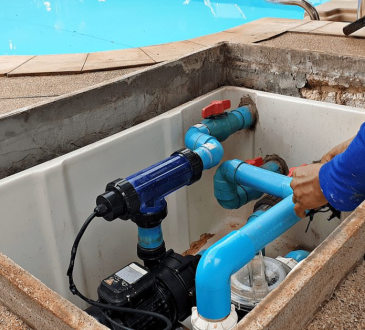
Mould is a common problem in homes, particularly in humid climates or poorly ventilated spaces. It not only affects the structural integrity of buildings but also poses health risks when left untreated. Once mould damage takes hold, it can spread quickly across walls, ceilings, and furniture, making mould remediation essential to restoring a safe and healthy living environment. Knowing the process and knowing how to respond early can make the difference between minor repairs and extensive restoration work.
Identifying the Signs of Mould Damage
The first step in mould remediation is recognising the early warning signs of mould growth. These may include dark patches on walls, a musty odour, or increased allergy symptoms among occupants. While small spots may appear harmless, they often indicate a larger problem beneath the surface. Mould thrives in areas where moisture accumulates, such as bathrooms, kitchens, or basements, and once established, it can spread rapidly through porous materials like drywall or wood.
Leaving mould untreated only worsens the situation. Over time, mould damage weakens structural elements of the home, resulting in costly repairs. Floors may become unstable, paint can peel, and insulation may lose effectiveness. In some cases, mould can even impact indoor air quality, aggravating respiratory problems for those with asthma or allergies. By identifying mould early and seeking professional help, homeowners can address the issue before it becomes a significant hazard.
The Process of Mould Remediation
Mould remediation involves identifying the source of moisture, containing the affected area, and removing contaminated materials. Professionals use specialised equipment to control air circulation, preventing spores from spreading to other parts of the property. Once containment is established, surfaces are cleaned or replaced depending on the severity of the mould damage.
A thorough remediation process also includes drying out affected areas to prevent regrowth. High-powered dehumidifiers and ventilation systems are often used to remove excess moisture from the air. In some cases, structural repairs may be necessary to restore the property to a safe and functional condition. Without these measures, mould can return quickly, causing the cycle of damage to continue. Mould remediation is a systematic approach to eliminating growth and preventing recurrence.
Preventing Future Mould Growth
While contacting a professional damage restoration service addresses current problems, prevention is key to avoiding repeated mould damage. Homeowners should focus on reducing moisture through proper ventilation, repairing leaks promptly, and using dehumidifiers where necessary. Regular inspections of bathrooms, kitchens, and areas prone to dampness can help identify issues before they escalate. In Singapore’s humid environment, extra care is often needed to control indoor humidity levels and ensure air circulates effectively.
Maintaining good cleaning habits also reduces the risk of mould returning. Using mould-resistant paints, sealing tile grout, and ensuring gutters are clear of debris can make a significant difference. Simple actions such as wiping down wet surfaces, leaving bathroom doors open after showers, and checking air-conditioning units for condensation can also prevent mould from gaining a foothold. By combining prevention with regular monitoring, households can maintain a safer, healthier environment over the long term.
Why Professional Help Matters
Attempting to handle mould problems without expertise can often lead to incomplete removal. Household cleaners may temporarily clear surface mould, but they rarely address hidden growth within walls or ceilings. Professional mould remediation ensures that both visible and concealed mould is treated effectively, reducing the chance of regrowth and further damage.
Specialists also assess the full extent of mould damage and provide recommendations for restoration. They bring knowledge, tools, and experience that allow for a comprehensive solution. Professionals can also advise on long-term moisture management strategies tailored to each property, making future prevention easier for homeowners. Engaging professional help not only resolves the immediate issue but also provides confidence that the living environment is safe, secure, and less prone to recurring problems.
Conclusion
Mould poses risks to both property and health, but with early detection, proper remediation, and ongoing prevention, it is possible to restore and maintain a safe home. Addressing mould damage promptly through professional mould remediation protects structural integrity and provides peace of mind.
Contact BELFOR Restoration Services today for expert mould remediation that restores safety and prevents future damage.




